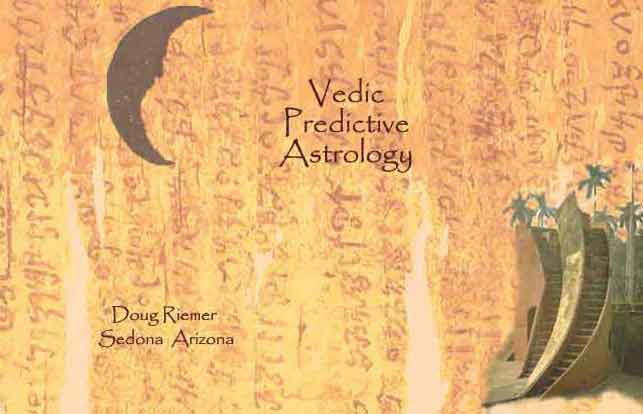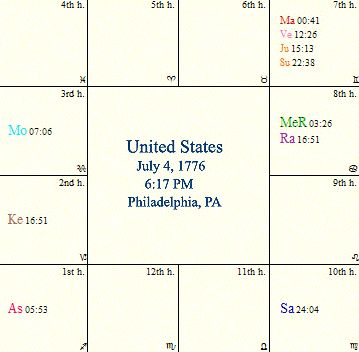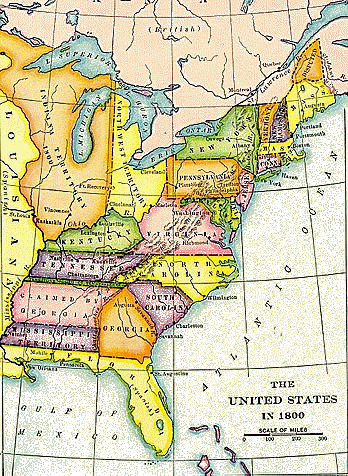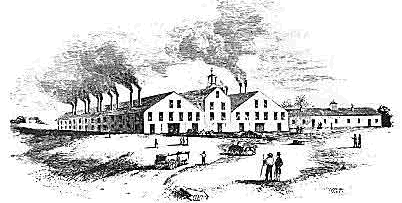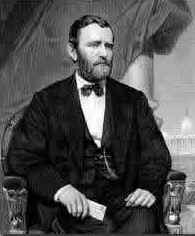|
#58a The United States Through Its Planetary Cycles Part
I 1776 to 1895
Introduction As we absorb the national election, its aftermath and the prospects for the future, it is useful to review the broad sweep of American history since the United States was born at the signing of the Declaration of Independence on July 4, 1776.Below is the United States chart and its accompanying Dasas, commonly called planetary cycles. Planetary cycles activate the planets' karmas on in a predetermined sequence, with the first planet deter- mined by the all-important Moon's position. Cycles range from six to twenty years, and adding all nine planets' cycles together totals one hundred and twenty years. As the U.S. is 228 years old, the nation completed its first cycle set in 1895 and is now nearing the completion of its second set of planetary cycles. Because U.S. history is well known, the traditional approach of analyzing the planets and houses first, and planetary cycles second, can be foreshortened. This Forecast uses the unconventional but effective approach of interpreting the U.S. chart via its planetary cycles. Because the nation completed one full planetary cycle set in 1895, all the planets had been experienced by that year. This historical under- standing of planetary qualities/behaviors specific to the U.S. chart empowers interpreting the second planetary cycle set, from 1896 to 2015, giving a comprehensive view right up to the present, and beyond. This Forecast is divided into two parts due to length. This first part interprets the initial set of planetary cycles from historical material. Forecast #58b interprets the second planetary cycles set. It is vital to read these in sequence. It is important to understand, however, that repeating planetary cycles do not repeat history, for events and trends are driven by circumstances. Also, planetary cycles are cumulative. They thus reveal the nation's development, pointing to planetary karmas fully learned and to others requiring more experience in order to correct their imbalances or harms. Yet, commonalities are surprising. The Moon's first ten year cycle, from 1879 through 1888, sent a 120 year old time capsule of issues forward 120 years to the current second cycle from 1999 to 2008. A further benefit of the planetary cycles approach is the resultant capability to interpret the shorter-term planetary sub-cycles during contemporary times. For example, learning how the Moon and Mercury behaved during their first planetary cycles during the nineteenth century, enables twenty first century predictions for the the Moon cycle, Mercury sub-cycle running from September 2004 through February 2006. (Actually, since there are four sub-cycle planets of decreasing length, predictions for shorter time periods can be made.) Interpreting planetary cycles is a uniquely revealing approach to frame history. Below is the U.S. chart and it attendant two sets of planetary cycles. The U.S. was born just after the eighteen year Rahu cycle began, which is why Rahu's first cycle is shortened by one year to seventeen. All subsequent planetary cycles are full length. The initial and current Moon cycles are highlighted.
Following are the nine planetary cycles, including the presidencies, major events and narrative inter- pretations of each. Presidents are identified as Republican (R) or Democrat (D) beginning with the 1857 election, the first after the modern Republican Party was formed in 1854. Wars are in maroon to highlight their occurrence. While the unique approach of applying Vedic planetary cycles means this history must sometimes depart from conventional understanding, it offers a fresh perspective, revealing national proclivities not fully known or appreciated. The use of major events assures planetary cycles analysis is reasonable. Because all planetary cycles change late in the year on November 30, the beginning year for each is advanced to the following year. Events were culled from three timelines, American History Timeline, Brief Timeline of American Liter- ature and Events and Timeline of Events 1750 - 1939. Selected events sample consequential actions and trends in the primary areas of government, business and religion. Additional research was done to place these events within an historical context. Readers generally have a grasp of the planets' symbolism, and the narratives specify major planetary qualities operating during each cycle to better enable integrative comprehension. Rahu and Ketu, the eclipse points known as the Moon's Nodes, are not, however, part of Western culture. If you have not been ex- posed to the meanings of these mysterious shadow planets, you'll find a discussion of Rahu and Ketu on the home page of VedicPredictiveAstrology in the section, Vedic Life Consultation.
Rahu is the head-of-a-serpent, identifying an eclipse point of the Sun and the Moon. Its nature is to intensify in a powerful and often confrontational worldly manner, for good or for ill. Rahu specifically signifies foreigners, illusion and science. This serpent-head is placed placed in the eighth house of hidden things, where it intensifies that house's research, mysticism, power, turmoil and disaster.
This resulted in a violent break from the colonial yoke and the inspired creation of a democratic govern- ment with checks and balances to protect against future authoritarianism, indeed control by any outside influence or domestic group. America's vaunted independent nature, then, was a fear-driven search for freedom that began with the first English settlements. Eighth house turmoil and disaster made this birth of a nation a long, complex and long-debated process. The Revolutionary War was typical eighth house turmoil, verging on disaster -- a series of victories and defeats over eight long years. Agreeing on a governing system was similarly arduous, with the unwieldy 1781 Articles of Confederation yielding to the much negotiated Constitution in a second extended eight year process. Given that Rahu's distrust included economic domination, the Constitution was as much an economic charter as a political one. The new nation adopted an unfettered economic system, now labeled capitalism. Rahu's fascination with eighth house mystical illusion stimulated a belief in the country's God-given dest- iny, another driving force for rebellion. (This later justified acquiring other lands and wars against Native American tribes and was formalized as Manifest Destiny.) Rahu's strong mystical bent required religious freedom and a secular government. However, America embraced a conflicted philosophy with separation of church and state (only implicit in the First Amendment), while Rahu included some occult qualities in government. Masonic Lodge members' predominance in government and the eye-topped pyramid on the dollar bill are examples of mysticism in the public sector, presumably to keep America safe from foreign influences and prevent a resurgence of the Puritans' theocracy. Mysticism also became a refuge from damnation, a bulwark against neuroses. -- doesn't In God We Trust on our currency actually means that God acting through government will save us if we believe? The nation would always be subject to this duality, ostensibly rationally secular but with emotionally intense mystical beliefs permeating the culture. (Note: The subsequent discussions of Jupiter's and Mercury's cycles investigates how this mysticism evolved.) There is another fearful quality to Rahu placed in the eighth. That house's power includes sex, and worldly cravings Rahu cannot resist plunging the depths of human sexuality. This Rahu-fascination with sex created a sexual neurosis demanding a protective purity. The roots for this are are deep and wide, going back to Calvinist Puritan colonists in New England and later supported by immigrating Catholics. Yet, in early America, there were many breakaway mystical religious groups that incorporated unusual sexual practices. These ranged from complete abstinence to the Mormons' polygamy. (One of the most remark- able instances of this cultist sexuality, which continues today, is the worship of poisonous snakes by isolated southern churches. Rahu's snake symbolism there is inescapable.) Religious freedom demanded religious sex activities be permitted, while a free and healthy sexuality was simultaneously forbidden. Sex, then, is another dividing force in America's conflicted consciousness. The invention of the cotton gin at the end of Rahu's Dasa was an early demonstration of America's crea- tive genius in its newly free and open society. It heralded the technological innovation that would harness the country's wealth of resources and peoples. Yet, as Rahu is essentially a demon, he brings poison at the end of his cycle, and the eighth house is hidden disaster. The Rahu-inspired cotton gin, in revitalizing the South's dying slave economy, was an unseen poison that eventually erupted in the Civil War. We can see in Rahu's cycle, America's first, the creation of a national character in which, Imbalances and inequality among groups stimulate conflicts to reintegrate the culture along shared demo- cratic values. (Rahu's next cycle runs from 1896 to 1913 -- democracy is revitalized (the Progressive Era) by redressing Gilded Age excess and political corruption. Great scientific and technological advancements are also made.)
Jupiter rules the Ascendant (first house) in this Sagittarius rising chart and thereby is a fundamental force on the nation's character. Its significations for religious faith, optimism, fairness, luck, fortune, and expansion are all potently supported throughout the nation's history. Jupiter also balances the Rahu neuroses of outside control and sex, and consequent radical emotion-driven mysticism, with expansive emotions, socialibility, self-assured devotion and grounded wise perception. Following the nation's secular beginnings, Jupiter's cycle fueled a religious revival of many expressions lasting until mid century. This Second Great Awakening began with the first evangelical revival camp meeting in 1800. Many Americans, with their fervent mystical bent, rejected the traditional cold and formal Protestant Church Calvinism -- salvation solely being in God's hands. Evangelical Revivalism used fear of eternal damn- ation to provoke conversion, redemption and salvation. Thus, individuals, not God, could choose salvation, going to heaven after death. Camp meetings featuring group prayer and singing and mass baptisms were the mechanisms that enabled these profoundly emotional and thereby deeply fulfilling religious experiences.
Jupiter's cycle was not entirely positive and benign, however. Jupiter with Venus and Mars stimulates overindulgence, even dissipation. Since Venus is love, Mars is sex and the seventh house is relationship, a second influence for unconstrained sex is given. Evangelical Revivalism provides a check here, saving Americans from their past sins and stifling sexual desires. Perhaps, given the emotionality of Revivalism, its religious experiences even substituted for sexual passion. Jupiter also receives dissonant energy from being placed with an intemperate Mars and receiving an aspect (glance) from a stolid unyielding Saturn. These malefic influences bring boom and bust economic cycles, breaks in cooperative alliances and violence. Popular protests were often fierce, and U.S. has had a remarkable number of wars (a dozen and counting). These variably: defend to protect, invade for gain, champion democracy abroad and some are a mix of these motives. Like the Rahu-illusion of separ- ation of church and state, America is a warrior nation that believes itself to be peaceful. Because Mars also aspects Saturn, there's a second and confirming influence for tension that erupts into war. War often brings wealth to America in a following economic boom. This is due to the Mars/Saturn combination impacting the two business houses, the seventh of relationships and the tenth of career. That prosperity results from war doesn't necessarily mean, however, that America's war intentions are always or intentionally for gain. This Jupiter cycle's war against Tripoli pirates was ethically to protect trade, which naturally aided the economy. Jupiter's next cycle, encompassing World War I, is another ethical war, but the following economic boom was unintentional. Since Venus (also signifying wealth) conjoins Jupiter, war resulting in gain also occurs in its cycles, notably the Civil War. An under-valued early invention, that of standardized parts for mass production of firearms, furthered economic progress and supported military capability -- to both repel outsiders and expand westward. The nation's first war, with Tripoli's pirates, served Jupiter's goals for safety in trade and earned infant America respect as a sea power from European powers. (Jupiter's next cycle runs from 1914 to 1929 -- continued economic/political democratization, World War I, great wealth and new evangelical churches.)
It is this potent Saturn that assured the U.S. develops primarily into an industrial country, and with Jupiter's land and wealth, achieves a preeminent position in the world. There were also inevitable economic reversals, for it is Saturn's nature to pare away excess from expan- sive Jupiter's previous cycle. Saturn in the tenth house also influences to serve and protect masses, and this was demonstrated in both the War of 1812 and the Monroe Doctrine, resisting further European colonizing in the New World. Sus- picious, dour and authority-resisting Saturn works in tandem with Rahu's fear and distrust of foreigners. Dur- ing this first Saturn cycle, America's isolationism and avoidance of foreign entanglements was thus embedded within the culture. Yet, resistance to authority concomitantly stimulated the independent pioneering zeal to explore and open new lands for gain -- applying Saturn's hard work and endurance. (Saturn's next cycle runs from 1930 to 1949 -- the Great Depression, social programs protect the public, great technical progress, World War II, U.S. emerges as a superpower.)
Although Rahu benefits from Mercury's intellect (as discussed in the Rahu cycle narrative), mutable and mental Mercury is enflamed by Rahu's intensity. Mental variability and creativity are accentuated by both planets being in the turbulent eighth house (research) in Cancer, the emotions and the home. The Mercury cycle stimulated: discord with foreigners (Rahu), expansion westward, turbulent economic growth, commotion in Mercury's social qualities and eighth house mysticism and power. The Alamo, Texas breaking from Mexico and the westward migration displacing Native Americans were primary issues with foreigners. The doctrine of Manifest Destiny was the mystically inspired descendant of the Rahu cycle's concept of a God-given destiny to break from England. This rationalized expansion across the continent by means of Providence -- divine intervention, the will of God. The event listing above also cites inventions furthering the nation's transformation from rural agrarian to urban industrial. Saturn having built the economic foundation, Mercury's inventions had the infrastructure needed to increase output and productivity, as well as expand westward to access natural resources. Be- cause Mercury aspects the second house of income, learning and knowledge, the standard of living and education greatly improved in the second quarter of the eighteenth century. This, in turn initiated a cultural shift from rough-hewn rural Saturn to refined urban Mercury. Yet, the Panic of 1837 and following recession reminds us that economic growth was turbulent. As Mercury rules the seventh house of relationships and the tenth house of public in this chart, its posi- tion in the dangerous eighth house creates social challenge, supported by a more affluent and educated public. During Mercury's cycle, slavery became an intractable issue dividing the nation into two camps. Mercury-inspired mysticism did more than justify geographical expansion. It further developed the country's mystical religious nature. This was seen in the 1830 founding of the Mormon Church. More far-reaching was William Miller's radical late expression of the Second Great Awakening's evangelical revivalism (rather innocently begun in 1800 under the Jupiter Dasa). Interpreting the Book of Revelations to predict the Second Coming of Christ in 1843, Miller created the idea of the Advent, from which the Adventist church arose. Believers would be saved and everyone else killed and sent to hell. Miller corrected his calculations for the Apocalypse to 1844, which became known as the Great Disappoint- ment. The idea of a literal reading of the Bible was too appealing to discard, however. To avoid this date problem in the future, Second Coming prophesiers decided that signs coming together indicate the end is near. Englishman John Darby's concept of the Rapture, which included the Antichrist (the devil) to further inspire fear, was added to complete this mystical construct, known today as Fundamentalism.
(Mercury's next cycle runs from 1949 to 1965 -- the cold war, economic innovation, growth, wealth, rebellion against conventional authority, religious beliefs.)
Looking back to the nation's first four planetary cycles (Rahu, Jupiter, Saturn and Mercury), those were all long intervals, from sixteen to nineteen years. Ketu's is the first short planetary cycle, and it acts both precipitously and weirdly as only this nonmaterial tail-of-a-dragon eclipse point can do in its fast-moving and short seven years. Yet, as an otherworldly spiritual influence bringing insight, Ketu ultimately encourages raising consciousness. Ketu acts with unexpected surprise and variably with regard to second house income, knowledge, com- munications and domestic harmony. An aspect from the intemperate warrior Mars to Ketu quickly stim- ulated the Mexican war, resulting in the U.S. gaining the entire Southwest region. Later, Ketu delivered the California gold rush. Domestic harmony (family and community life) was increasingly harmed via abolitionist writings and the Underground Railroad, and the women's first rights convention. These demonstrate Ketu's insight to redress unfairness. The Irish immigration wave is not so transparent, although it's typically Ketu-weird in being caused by a potato blight. Welcoming one half million starving mostly Catholic Irish to America is another expression of Ketu's insight elevating the culture. Adding Catholics brought a balancing religious mix to the exclusively Protestant population. The Irish influx also infused the nation with population needed to occupy and hold the new southwest territories. Ketu conveniently gave the California gold rush to jump migration across to the Pacific coast and deliver the wealth needed for expansion throughout the Midwest and West. (Note: con- sider the nation's transformation during Ketu's 1965 to 1972 Dasa to appreciate how this narrative makes sense despite how unrelated these events seem.) (Ketu's next cycle ran from 1966 to 1972 -- Vietnam war and protests, cultural change, scientific advancements.)
Venus in the seventh house of relationships and the social nature is a complex planet in the U.S. chart. This results primarily from Venus ruling the difficult sixth house of foreigners, servants and enemies. Venus thereby brings both beneficial and some harmful effects in its striving for cooperative progress. Jupiter has a dominant impact upon Venus, enhancing compassion, generosity, wealth and creativity. Due to Venus signifying foreigners, and Jupiter is an indicator of the home, the 1862 Homestead Act opened the door to downtrodden Europeans.
Because Venus also signifies servants and enemies in the U.S. chart, during its the Venus/Jupiter com- bination brought compassion for slaves and the ethical altruism to free them. However, this goal of social justice inevitably separated further the North and South. Aggressive Mars' influence upon Venus stimulates passion for humanity and immediate results. Mars is made harmful for its being Sandhi -- weak at the edge of the house and thereby destructive. With Mars ruling the fifth house of morality, together with Jupiter's ethics, Venus's compassionate insistent pressure against slavery forced the Civil War to erupt. Venusian efforts to reunite the country and rebuild the South (Reconstruction) commenced at wars' end in 1865 and continued through 1877, beyond the end of Venus's cycle and through most of the upcoming Sun cycle. The thirteenth through fifteenth Constitutional Amendments and the Reconstruction Act were the major legislation. By 1870, all States had returned to the Union. However, despite Venus's good intentions and best efforts on behalf of slaves and the South, Venus's signification for enemies, and Mars' discord, doomed the effort for inclusive democracy. The Civil War to end slavery is the first example of the Rahu cycle narrative conclusion how, Imbal- ances and inequality among groups stimulate conflicts to reintegrate the culture along shared democratic values. That Reconstruction was only partially successful does not negate the effort and suggests future movements to redress racial inequality.
This brought the black clouds of business excess and governmental corruption in Republican Ulysses S. Grant's two-terms that completed the Venus cycle. Grant's presidency is considered the most corrupt of all U.S. Presidents. It foreshadowed the most abusive period in America's history during the upcoming Sun and Moon cycles. Mars' influence upon Venus also explains Americans' perennial marriage problems. This Mars disrupts marriage and thereby the family, breaking down the traditional multi-generational household and accelerating movement to cities for industrial jobs. Too, there's the sexual quality of desire to overindulge constrained by religious beliefs about sin. Yet, toward the end of Venus's cycle, Mars' passion on female Venus brought the nation's first women's suffrage in Wyoming. (Venus's next cycle ran from 1973 to 1992 -- leveling social programs, wealth, increasing divorce and women entering the workforce.)
The Sun in the seventh house with Jupiter brings a warm and supportive effort for enriching relationships and government, and also inventions and wealth. However, because harmful Saturn aspects the Sun closely, these advances were flawed, and the cycle ended poorly. The Sun cycle continued to advance the nation's transformation, begun in the latter part of the Venus cycle, into a free reunited nation and a great industrial power. However, the 1865 to 1877 Reconstruction was incomplete, and the last Federal troops departing the South in 1877 left Blacks unprotected. De facto slavery was imposed by communities and the southern States using techniques including intimidation, dis- crimination, segregation and sharecropping. Economic development was spurred by technical Saturn's inventions, including the typewriter, telephone and phonograph. European migration accelerated to fill job demand and empty lands. However, this was an unregulated and unrestrained expansion that began in the Venus cycle under Ulysses S. Grant and grew into the economically abusive Gilded Age. The Sun is also a religious influence, but Saturn's aspect makes this an ascetic one, signaling the inception of the Victorian Era, discussed in the Moon cycle narrative, next. The Sun cycle, begun with great hopes for racial equality in the South and abundance for the common man, ended eliminating rights for Blacks and with wealth and power concentrated in an elite. The nation's essentially conservative religious nature inevitably reasserted itself.
The next Dasa, that of the Moon, brought the worst of both these democratic restrictions and economic evils. (The Sun's next cycle, from 1993 to 1998, similarly began extremely well and ended badly)
The Moon rules the deep and powerful but destructive eighth house and is placed in the third house of desires. There, the worldly Moon signifies intoxication with power, strength to win and willingness to use tough, even brutal, means. Jupiter throws an aspect to the Moon, which serves to expand wealth, overcome obstacles and to stimulate resource development. With this greedy, even rapacious Moon, the powerful grabbed whatever they chose, and there were abundant resources, labor and inventions to enable their quest, with no government regulation restraining their running roughshod over the populace. In fact, the 1886 Supreme Court ruling that corporations are persons, expanded business power. This concentration of economic power in a few naturally resulted in business gaining great influence over government, discussed below. These were the qualities resulted in the decadent Gilded Age, a term coined by Mark Twain to mock and expose industrialists and government corruption. The period was characterized by monopolies, price fixing, poor working conditions and worse living conditions in burgeoning cities. Carnegie (steel) and Rockefeller (oil) dominated the steel and oil industries, became known as robber barons. The urban poor sought help from political machines, most famously, Boss Tweed's Tammany Hall, which took much more than it gave to the public. The gap between rich and poor widened, and the middle class was stifled. And, of course, segregation became fully rooted with its attendant racism.
Government corruption was fueled at least in part by the wealthy elite buying off politicians. Concur- rently, the States and Federal governments indulged in pork-barrel spending mirroring the robber baron's excesses. Yet, there was an apparent contradiction in scaling back government expenditures. The answer here is that the wealthy pushed legislators to spend for their narrow interests but cut spending for programs benefiting the general public. Government during the Moon cycle was an advocate for Laissez Faire capitalism, not an altruistic force for the greater public's welfare. The election of 1884 was memorable for its mudslinging and personal attacks. Democrat Grover Cleveland was a former sheriff who personally hanged two murderers, but he was assailed for avoiding military duty during the Civil War and for having a child out of wedlock. Republican James Blain was accused of selling his influence in Congress to a railroad. The turning point came when, just six days before the election, Blain was falsely accused of believing urban immigrants were drunkards, followers of the pope, and the cause of the Civil War. Handbills denouncing Blain were circulated stating, Rum, Romanism and Rebellion. Blain lost New York and the election by 1,149 votes. Cleveland, essentially as conservative as the Republicans, failed during this term (and his next in 1893) to restrain the robber barons or corrupt politicians. Because the worldly Moon rules the eighth house of the occult and is aspected by traditionally religious Jupiter, eighth house mysticism was an undercurrent to the conservative Protestantism of the Victorian Age. Victorians advocated asceticism, church attendance, hard work and extreme moral purity -- Queen Victoria required skirts on piano legs to prevent prurient thoughts leading to lasciviousness. Victorianism thereby stimulated a purity crusade, which basically responded (again) to American's fear of sex. Blue Laws, first promulgated by New England's Puritans seeking a theocratic state, prohibited business on Sunday and targeted a wide range of immoral activities: lotteries, cigarettes, alcohol, opiates, obscene literature, birth control information, contraceptives. Attempts were also made to censor books and theatre. Victorianism served admirably to keep the masses in check, working selflessly for the tycoons, who pro- fessed to Victorian minimalism while indulging in the most extreme material excesses. Obedient citizens didn't initially object much to this this infusion of religious restriction into government, nor to the two-faced behavior of many in the new upper-class. Yet, not all tycoons had lavish lifestyles. Some, like Rockefeller, lived by puritanical Vicotiran age values, and as the Progressive Age arrived in the early twentieth century, they and their heirs became philanthropists. During the Moon cycle, the powerful were in control, obviating the system of checks and balances that protected democracy. The 1886 Hay- market Square labor riot was an early signal of the popular and often violent protests that would grow into the Progressive Age. The Moon cycle's period of unfettered and abusive business expansion, government corruption, pork- barrel spending, cuts in public services, a dirty-tricks presidential campaign and enforced moral purity is an eerie echo to the Moon's next ten year cycle, which began in 1999. (The Moon's next cycle, from 1999 to 2008 -- began with G.W. Bush's controversial election won in Florida by 537 votes.)
Mars is particularly destructive in the seventh house of relationships, as discussed in the Venus cycle narrative. The unimpeded excesses of the Gilded Age began to be seriously challenged during the Mars cycle with the labor strikes, often violent as is Mars' nature. The powerful industrialists resisted, of course, and it's one of those oddities in the American psyche that the 1890 Sherman Anti-trust act was used to stop a railway workers strike by claiming it interfered with interstate commerce. This was basically class warfare. Because Mars rules the fifth house of investments, its cycle inspired the Financial Panic of 1893, and this brought a severe depression lasting four years. The excesses of the Gilded Age had become its undoing. This combination of violent protest and economic hardship paved the way for the Progressive Era's reforms during the next Rahu cycle. The Southern states used Mars' aggression to began enacting Jim Crow laws formalizing segregation and blocking Blacks from voting. Thus we can trace the tandem trends of national economic abuse and de facto southern slavery back to the middle of the Venus Dasa in about 1869 (Ulysses S. Grant) and continuing through the cycles of the Sun, Moon and Mars. Mars' seven year cycle ends the first set of planetary cycles that began in 1776. (Mars' next cycle will run from late 2008 to 2015)
Summary How The Planets Behave In The U.S. Chart With all nine planets having run their cycles, how each behaves in the U.S. chart has been demonstrated. Here's a summary for each:
|
